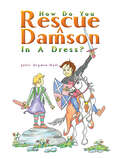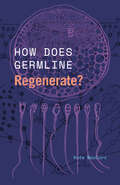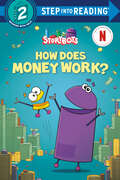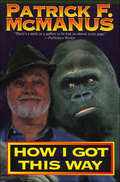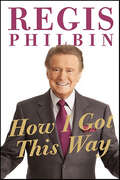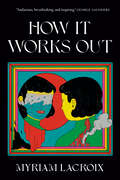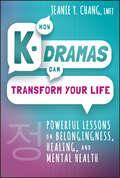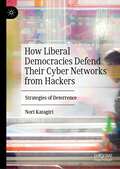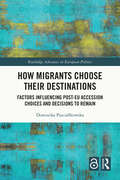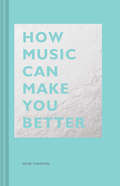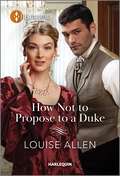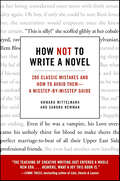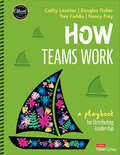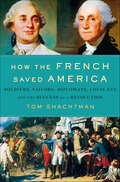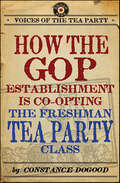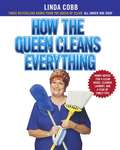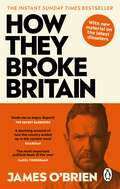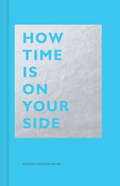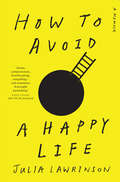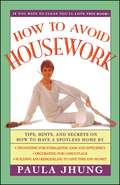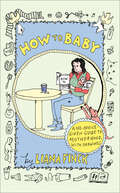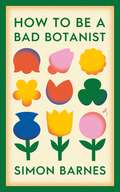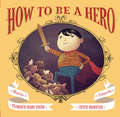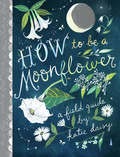- Table View
- List View
How Do You Rescue a Damson in a Dress?
by Julie Dryden-HallEmbark on a whimsical tale of curiosity, adventure, sibling camaraderie, and a sprinkle of delightful misinterpretation in How Do You Rescue a Damson In A Dress? With eyes sparkling with wonder and a heart buoyed by courage, our young prince gallantly trails behind his elder brother, embarking on what he believes to be a noble quest to rescue a ‘Damson in a Dress.’ Unbeknownst to him, his brother is on a mission to save a Damsel in Distress. Armed with a valiant sword, a stash of sweets, and a flask of milk to quench his thirst, the young prince steps into a world brimming with enchanting adventures yet perilous encounters. His path intertwines with a formidable grizzly bear, a cunning and greedy wolf, a menacing crocodile, and the mythical Nessy Monster. Despite the lurking dangers, his youthful bravado never wavers. As the veil of misinterpretation humorously unfolds, will our young hero find the ‘Damson’ he seeks? Or will he discover a greater understanding of his brother’s true quest?
How Does Germline Regenerate? (Convening Science: Discovery at the Marine Biological Laboratory)
by Kate MacCordA concise primer that complicates a convenient truth in biology—the divide between germ and somatic cells—with far-reaching ethical and public policy ramifications. Scientists have long held that we have two kinds of cells—germ and soma. Make a change to germ cells—say using genome editing—and that change will appear in the cells of future generations. Somatic cells are “safe” after such tampering; modify your skin cells, and your future children’s skin cells will never know. And, while germ cells can give rise to new generations (including all of the somatic cells in a body), somatic cells can never become germ cells. How did scientists discover this relationship and distinction between somatic and germ cells—the so-called Weismann Barrier—and does it actually exist? Can somatic cells become germ cells in the way germ cells become somatic cells? That is, can germ cells regenerate from somatic cells even though conventional wisdom denies this possibility? Covering research from the late nineteenth century to the 2020s, historian and philosopher of science Kate MacCord explores how scientists came to understand and accept the dubious concept of the Weismann Barrier and what profound implications this convenient assumption has for research and policy, from genome editing to stem cell research, and much more.
How Does Money Work? (Step into Reading)
by Scott EmmonsThe robots from Netflix's StoryBots Answer Time star in an all-new Step 2 Step into Reading leveled reader!Bing wants to know what money is and why we use it. His questions lead him from a bank to a tour of a successful lemonade stand. What he learns will fascinate children ages 4 to 6 who love Netflix's educational show.Step 2 Readers use basic vocabulary and short sentences to tell simple stories. For children who recognize familiar words and can sound out new words with help.
How I Got This Way
by Patrick F. McManusPatrick McManus, the bestselling author of such hilarious books as A Fine and Pleasant Misery and Never Sniff a Gift Fish, now offers readers solid thoughts on the qualities that define leadership, beginning with the need to be tall, and much more, in this outrageous collection of short pieces that reveals his tortuous trip along the writer's path.
How I Got This Way
by Regis PhilbinIn this entertaining memoir, the irrepressible "Reege" - consummate talk show host, man about town, loving husband, father, and yes, obsessive sports fan-looks back at his years in show business. One of the most popular television and cultural icons ever, Regis Philbin entertained television audiences for more than fifty years—as a beloved morning-show host (Live with Regis and Kelly), a nighttime game-show host (Who Wants to Be a Millionaire?) and also as a fixture on national and local late-night talk shows. The irrepressible “Reege” has regaled television audiences with his stories for more than half a century, but he’s saved the most hilarious, surprising, heartfelt, and inspiring tales for How I Got This Way. Both a fascinating show business memoir and a delightful primer for living the good life rolled into one, How I Got This Way is Reege being Reege, just the way we love him, as he shares the secrets to success and happiness that he has learned from his innumerable celebrity encounters, his close, personal friendships, and, of course, his relationship with his loving wife and family.
How It Works Out
by Myriam Lacroix&“Audacious, breathtaking, and inspiring.&” —GEORGE SAUNDERS&“Madcap, delirious, exhilaratingly good.&” —KELLY LINK&“A delightfully bizarre and unabashedly queer revelation.&” —TEGAN and SARA QUIN &“A beautifully brilliant, hilariously sad stunner of a debut that never forgets about the heart.&” —NANA KWAME ADJEI-BRENYAHWhat if you had the chance to rewrite the course of your relationship, again and again, in the hopes that it would work out?When Myriam and Allison fall in love at a show in a run-down punk house, their relationship begins to unfold through a series of hypotheticals. What if they became mothers by finding a baby in an alley? What if the only cure for Myriam&’s depression was Allison&’s flesh? What if they were B-list celebrities, famous for writing a book about building healthy lesbian relationships? How much darker—or sexier—would their dynamic be if one were a power-hungry CEO, and the other her lowly employee? From the fantasies of early romance to the slow encroaching of violence that unravels the fantasy, each reality builds to complete a brilliant, painfully funny portrait of love&’s many promises and perils.Equal parts sexy and profane, unsentimental, and gut-wrenching, How It Works Out is a genre-bending, arresting, uncanny exploration of queerness, love, and our drive for connection, in any and all possible worlds.
How K-Dramas Can Transform Your Life: Powerful Lessons on Belongingness, Healing, and Mental Health
by Jeanie Y. ChangDiscover the power of how K-Dramas can improve your wellbeing and provide a sense of belonging Love K-Dramas and want more permission to binge watch them? In How K-Dramas Can Transform Your Life: Powerful Lessons on Belongingness, Healing, and Mental Health, Licensed Marriage and Family Therapist Jeanie Y. Chang explores what K-Dramas can teach us about our own well-being and how we can use the lessons they teach us to live better and more meaningful lives. She also touches upon the powerful interrelationship between K-dramas, mental health, and belongingness. Topics covered include: Using K-Dramas as a roadmap to life, showing you how to navigate speed bumps, roadblocks, twists, turns, and dead ends Building cross-cultural relationships that you otherwise may not have without being a K-Drama fan Processing grief from the loss of a loved one to a loss of anything—a job, your physical safety, a relationship, or something else Harnessing the idea of Jeong, which is innate in Korean society and refers to the emotional sentiment of affinity, affection, kinship, and connection which is the thread throughout Jeanie's community Working the author’s trademarked mental health framework, Cultural Confidence®, to build up your mental health, identity, mindfulness, and resilience For K-Drama fans and enthusiasts and anyone curious about the influence of pop culture, How K-Dramas Can Transform Your Life is an entertaining and educational must-read on how this enormously popular global phenomenon can help us become the best versions of ourselves.
How Liberal Democracies Defend Their Cyber Networks from Hackers: Strategies of Deterrence
by Nori KatagiriThis book outlines the main technological, legal, and operational options that liberal democratic nations have when confronting challenges in cyberspace. It offers a range of policy ideas they can adopt to make their defense stronger and deter future cyber-attacks. The author explores how liberal societies, especially those in the Western world, have so far confronted a variety of cybersecurity challenges by hackers in nondemocratic regimes like Russia and China. and zooms in on the main challenges that democratic states face in adopting strategies of cyber deterrence, and how those challenges shape their ability to actually deter hackers.
How Migrants Choose their Destinations: Factors Influencing Post-EU Accession Choices and Decisions to Remain (ISSN)
by Dominika PszczółkowskaThis book reveals how decisions regarding where to migrate are made, what factors are considered, how these change over time and why some destinations are more attractive to certain categories of people.Based on rich existent, and new data, the book explains the destination choices of Polish migrants to the four most frequently chosen destinations countries: the UK, Ireland, Germany and the Netherlands. Examined through a sophisticated theoretical framework allowing for the incorporation of factors resulting from several fields – economics, public policies, demography – and migration theories, it paints a nuanced and balanced picture of European migration.This book will be of key interest to scholars and students of migration studies, Central and Eastern European politics, and more broadly to sociology, political science, social geography and international relations.
How Music Can Make You Better: (motivational Book, Neuroscience Book) (The HOW Series)
by Indre Viskontas PhDHow can certain songs carry us through a tough workout, comfort us after a breakup, or unite 50,000 diverse fans? In this fascinating field guide, neuroscientist and opera singer Indre Viskontas investigates what music is and how it can change us for the better—from deep in our neurons to across our entire society. Whether hip-hop fans, classically trained pianists, or vinyl collectors, readers will think about their favorite songs in a whole new way by the end of this book. This is a vibrant and smart gift for any audiophile.
How Not to Propose to a Duke (A Season of Celebration #1)
by Louise AllenIn celebration of Harlequin&’s 75th year, we bring you A Season of Celebration! Beginning with this captivating Regency romance…Miss Danby&’s daring proposition for the duke First, wealthy ironmaster&’s daughter Jessica Danby needs a titled husband. So, upon learning that Alexander, the Duke of Malvern, needs a rich wife, she makes a convenient proposal… Next, her impetuous marriage offer is swiftly rejected by Alex, who wants to marry for love! Now Jessica accepts his help in finding another suitor. But as they spend the Season by each other&’s side, she realizes that their unlikely friendship is becoming something more thrilling!From Harlequin Historical: Your romantic escape to the past.A Season of CelebrationBook 1: How Not to Propose to a Duke by Louise AllenBook 2: Wed in Haste to the Duke by Sarah MalloryBook 3: The Kiss That Made Her Countess by Laura Martin
How Not to Write a Novel: 200 Classic Mistakes and How to Avoid Them—A Misstep-by-Misstep Guide
by Howard Mittelmark Sandra Newman"What do you think of my fiction book writing?" the aspiring novelist extorted. "Darn," the editor hectored, in turn. "I can not publish your novel! It is full of what we in the business call 'really awful writing.'" "But how shall I absolve this dilemma? I have already read every tome available on how to write well and get published!" The writer tossed his head about, wildly."It might help," opined the blonde editor, helpfully, "to ponder how NOT to write a novel, so you might avoid the very thing!"Many writing books offer sound advice on how to write well. This is not one of those books. On the contrary, this is a collection of terrible, awkward, and laughably unreadable excerpts that will teach you what to avoid—at all costs—if you ever want your novel published. In How Not to Write a Novel, authors Howard Mittelmark and Sandra Newman distill their 30 years combined experience in teaching, editing, writing, and reviewing fiction to bring you real advice from the other side of the query letter. Rather than telling you how or what to write, they identify the 200 most common mistakes unconsciously made by writers and teach you to recognize, avoid, and amend them. With hilarious "mis-examples" to demonstrate each manuscript-mangling error, they'll help you troubleshoot your beginnings and endings, bad guys, love interests, style, jokes, perspective, voice, and more. As funny as it is useful, this essential how-NOT-to guide will help you get your manuscript out of the slush pile and into the bookstore.
How Teams Work: A Playbook for Distributing Leadership
by Cathy J. Lassiter Douglas Fisher Toni Osborn Faddis Nancy FreyFoster Trust, Accountability and Engagement in Your Teams Creating strong, cohesive teams is an art, and How Teams Work: A Playbook for Distributing Leadership is the essential guide for school leaders looking to master this craft. This interactive playbook doesn′t just advise but actively equips leaders with the tools they need to foster trust, accountability, and engagement in their teams. School leaders today face a critical mandate: to empower, engage, and work in concert with their teams to foster a positive and productive school environment. How Teams Work doesn′t offer mere platitudes—it offers practical strategies and tools, with concept maps, learning intentions, team challenges, reflection prompts and more. Information is organized into six modules exploring: The foundational role leaders play in team dynamics Strategies to bring together and mobilize effective leadership teams Methods to forge and maintain team unity and collaboration How to build and maintain trust and respect within teams Practical tools for maximizing team productivity and decision-making Guidelines on reflective leadership to assess and improve team performance How Teams Work isn′t only a resource; it′s a roadmap to sustainable success, illuminating the path to nurturing leadership at every level. In an age where the turnover of educators is high and the need for sustained, collective school improvement efforts is urgent, leveraging the power of teams isn′t just advantageous—it′s essential.
How Teams Work: A Playbook for Distributing Leadership
by Cathy J. Lassiter Douglas Fisher Toni Osborn Faddis Nancy FreyFoster Trust, Accountability and Engagement in Your Teams Creating strong, cohesive teams is an art, and How Teams Work: A Playbook for Distributing Leadership is the essential guide for school leaders looking to master this craft. This interactive playbook doesn′t just advise but actively equips leaders with the tools they need to foster trust, accountability, and engagement in their teams. School leaders today face a critical mandate: to empower, engage, and work in concert with their teams to foster a positive and productive school environment. How Teams Work doesn′t offer mere platitudes—it offers practical strategies and tools, with concept maps, learning intentions, team challenges, reflection prompts and more. Information is organized into six modules exploring: The foundational role leaders play in team dynamics Strategies to bring together and mobilize effective leadership teams Methods to forge and maintain team unity and collaboration How to build and maintain trust and respect within teams Practical tools for maximizing team productivity and decision-making Guidelines on reflective leadership to assess and improve team performance How Teams Work isn′t only a resource; it′s a roadmap to sustainable success, illuminating the path to nurturing leadership at every level. In an age where the turnover of educators is high and the need for sustained, collective school improvement efforts is urgent, leveraging the power of teams isn′t just advantageous—it′s essential.
How the French Saved America: Soldiers, Sailors, Diplomats, Louis XVI, and the Success of a Revolution
by Tom ShachtmanAmericans today have a love/hate relationship with France, but in How the French Saved America Tom Shachtman shows that without France, there might not be a United States of America.To the rebelling colonies, French assistance made the difference between looming defeat and eventual triumph. Even before the Declaration of Independence was issued, King Louis XVI and French foreign minister Vergennes were aiding the rebels. After the Declaration, that assistance broadened to include wages for our troops; guns, cannon, and ammunition; engineering expertise that enabled victories and prevented defeats; diplomatic recognition; safe havens for privateers; battlefield leadership by veteran officers; and the army and fleet that made possible the Franco-American victory at Yorktown. Nearly ten percent of those who fought and died for the American cause were French. Those who fought and survived, in addition to the well-known Lafayette and Rochambeau, include François de Fleury, who won a Congressional Medal for valor, Louis Duportail, who founded the Army Corps of Engineers, and Admiral de Grasse, whose sea victory sealed the fate of Yorktown. This illuminating narrative history vividly captures the outsize characters of our European brothers, their battlefield and diplomatic bonds and clashes with Americans, and the monumental role they played in America’s fight for independence and democracy.
How the GOP Establishment Is Co-Opting the Freshman Tea Party Class (Voices of the Tea Party)
by Constance DogoodNew from Broadside Books' Voices of the Tea Party. In this first-hand account of the perils of Washington, Constance Dogood, an average American who became an early leader of the Tea Party movement, describes the methods used by the Republican Establishment to co-opt the Freshman members of Congress. Called "the Tea Party Class" because they were propelled into office by a wave of Tea Party support, these 63 new Republican members of Congress face a daunting challenge in the 112th Congress. On the one hand, they need to honor the promises they made to the tea partiers in their districts who helped elect them. On the other hand, they need to learn the ropes of Washington without unnecessarily alienating the Republican Establishment so long entrenched in and around the corridors of power. Constance concludes that the House of Representatives would be well advised to ditch the century old hierarchical party leadership structure and look to the Tea Party movement itself for a superior model of organizing to return the country to its constitutional roots.
How the Queen Cleans Everything: Handy Advice for a Clean House, Cleaner Laundry, and a Year of Timely Tips
by Linda CobbA how-to manual for housekeeping amateurs and pros alike, How the Queen Cleans Everything is a collection of fast and ingenious tips from #1 New York Times bestselling author -- and housekeeping's royal lady -- Linda Cobb, the Queen of Clean®. It's all here. All of the Queen's miraculous tips and surprising shortcuts on how to solve hundreds of cleaning challenges -- inside and out. Let the Queen show you how to turn your home into a sparkling palace in no time at all. Learn how to put an end to washday drudgery with her collection of nifty and natural solutions for stress-free washing and ironing -- and enjoy a year's worth of tips, tricks, and picks for a cleaner house and a more organized life. But most of all, discover how the Queen's no-nonsense "tips and hints" method of housekeeping means less time cleaning your home, and more time enjoying it! Let the Queen show you:the best way to clean your kitchen and bathroomthe multitude of natural stain removers that are hiding in your cupboardhow to garden the natural waywhat to do for spots, stains, scorch marks, and odorswhy you shouldn't clean your windows with newspaperhow to clean your carpet and bare floorsthe right way to allergy-proof your homewhat those care labels really meanhow to treat troublesome stains and delicate fabrics...and much more! At last...all the Queen of Clean's® famous advice for a clean house, cleaner laundry, and a year of timely tips -- right at your fingertips! Don't be home without it!
How They Broke Britain: The Instant Sunday Times Bestseller
by James O'Brien***THE RUNAWAY BESTSELLER, WITH NEW MATERIAL FOR THE PAPERBACK***THE REVEALING, DEFINING ACCOUNT OF THE DARK NETWORK THAT BROKE OUR COUNTRY.Something has gone really wrong in Britain.Our economy has tanked, our freedoms are shrinking, and social divisions are growing. Our politicians seem most interested in their own careers, and much of the media only make things worse. We are living in a country almost unrecognisable from the one that existed a decade ago. But whose fault is it really? Who broke Britain and how did they do it?Bold and incisive as ever, James O'Brien reveals the shady network of influence that has created a broken Britain of strikes, shortages and scandals. He maps the web connecting dark think tanks to Downing Street, the journalists involved in selling it to the public and the media bosses pushing their own agendas. Over ten chapters, each focusing on a particular person complicit in the downfall, James O'Brien reveals how a select few have conspired - sometimes by incompetence, sometimes by design - to bring Britain to its knees.
How Time Is on Your Side (How Ser.)
by Bridget Watson PayneYes, there really is enough time to do it all: the passion projects, the to-do list, or simply making time to do nothing—the trick is knowing how to look for it. Packed with helpful tips, How Time Is on Your Side is a simple handbook to help reframe your relationship with time. Through practical productivity tools and inspiring stories of people who make time for the things that matter to them, you will find that achieving your goals isn't as farfetched as it seems. Let the encouraging words of artist and author Bridget Watson Payne be your guide to reinvent your relationship with time: it's not the enemy; it's a friend.• Learn how to nurture your inner creative, spiritual, emotional, and mental lives.• Written in author Bridget Watson Payne's smart, friendly, tell-it-like-it-is prose• Tips and tricks include utilizing your calendar to its full advantage, doing mental work in the morning and physical work in the afternoon, and putting your big goals on your to-do list.With smart, unintimidating content, this guide is sure to inspire anyone to make time to achieve their goals. Take a moment, a minute, or a day to reinvent your relationship with time, and discover how it can work for you.The time you need is there. Let How Time Is on Your Side help you find it.• A great book for men and women of any age, creatives and aspirational creatives, busy professionals, students, young families, graduates, and self-improvement seekers• Great for busy people who want to make the most of their time• Perfect for fans of The Creative Habit by Twyla Tharp, Manage Your Day-to-Day by Jocelyn Glei, and Make Time: How to Focus on What Matters Every Day by Jake Knapp and John Zerat
How to Avoid a Happy Life
by Julia LawrinsonSome people are born into bad situations, some people have bad situations thrust upon them, and some people find bad situations through their dodgy choices, lack of information and personal idiosyncrasies. Julia' s life sits at the intersection of all three. From high school dropout on a psych ward to card-carrying lesbian on a motorbike, from enduring a controlling relationship with her ex-lover' s brother to being chased by a media scrum outside a Perth court, the life of beloved children' s author Julia Lawrinson is stranger than fiction – and she draws on all her power as a storyteller to turn a life of intense headlines into a wild, marvellous tale.
How to Avoid Housework: Tips, Hints, and Secrets on How to Have a Spotless Home
by Paula JhungHousehold tips by a popular columnist include fast tidy jobs for unexpected visitors, organizing clutter, creating a self-maintained kitchen, coping with mess-makers, and keeping the bathroom clean.If you think it’s not possible to have a virtually self-cleaning home—think again! America’s self-proclaimed “#1 Avoidance Expert” tells all in this often hilarious, always smart, and eminently practical compendium of tips, hints, and secrets to maintaining a spotless home by barely lifting a finger. Would you rather arrange flowers and light candles than dust the table they sit upon? Would you rather sweep the dust under the rug than vacuum it? Here at last, in this terrific “antihousework” bible, Paula Jhung blends artful advice, a soupcon of illusion, and a bucketful of wit to whip up super solutions for the “I Hate to Housekeep” brigade. Sweeping (quickly) through every room in the house, Jhung gives you the dirt.
How to Baby: A No-Advice-Given Guide to Motherhood, with Drawings
by Liana FinckA wryly personal and deeply relatable graphic memoir skewering the &“traditional&” parenting book to chronicle the absurdities, frustrations, and soaring joys of new parenthood—from the acclaimed New Yorker cartoonist and authorHow do you know if you&’re ready to have a baby? How do you know if you might be pregnant? And how do you deal with peeing all the time and being hungry all the time and fielding well-meaning but kind of insulting advice and finding a doula and being dropped by your old friends and learning why it&’s called mom brain and not dad brain and the tyranny of the milestones you&’re not meeting and negotiating boundaries with in-laws and realizing that your heart now exists outside of your chest and in the body of this tiny little being whose entire existence depends on the quality of your care? To tackle these questions and many others, award-winning cartoonist and memoirist Liana Finck began illustrating her early years of motherhood, giving images and language to her insecurities, frustrations, and wild joy. In How to Baby, Liana takes her witty and lacerating cartoons (&“Hobbies for Pregnant Women: Waiting on Hold with the Insurance Company&”) and weaves them together with comic essays (&“You Married a Brute. Worse. You&’re a Nag: Go Ahead and Argue with Each Other&”), handy lists (&“Nesting. The Comprehensive List of What to Buy and Why Getting Things Used Is Dangerous and Unamerican&”), and profound observations. Together, these brilliant pieces form an immersive and comprehensive narrative whole—a baby book, a resource, and an emotional balm—for our time.
How to be a Bad Botanist
by Simon BarnesCan you tell a tomato from a grape? Lawn from an oak tree? Then congratulations - you are a botanist. Self-confessed bad birdwatcher Simon Barnes thought he knew nothing about plants. He didn't object to them: trees are interesting, because birds perch in them; plants are useful as they create habitats and birds live in habitats. But while admiring the tenacity of some sea kale and yellow-horned poppy to thrive on an inhospitable shingle beach, he was struck by a truth - it all begins with plants. In this funny and inspiring book, Simon Barnes tells the story of a lifelong relationship with plants, and the realisation of the fact. Taking us from thinking ourselves ignorant about plants, to gently starting to observe seasons, patterns and places, Barnes guides us on a journey to better observing the beauty and diversity of the natural world. Both a primer on how to appreciate the plants around us and an exploration on how they make our external and interior worlds, How to be a Bad Botanist opens our eyes to the wonders around us. Plants are everywhere, in every part of your life, and you know more than you think.
How to Be a Hero
by Florence Parry HeideOnce upon a time, there was a nice boy and his name was Gideon. He lived in a nice house, and he had nice parents and lots of toys. But Gideon wasn't satisfied. He wanted to be a hero. You know, a hero, with his name on the front page of the newspaper. That sort of thing. So how does anyone get to be a hero, anyway? Heroes have to be strong. Heroes have to be brave. Heroes have to be clever. Don't they? With wry humor, Florence Parry Heide and Chuck Groenink explore how we choose our idols in a witty story that leaves it to readers to decide the real nature of heroism. Plus, this is the fixed format version, which looks almost identical to the print edition.
How to Be a Moonflower
by Katie DaisyHow to Be a Moonflower, the new book from bestselling author Katie Daisy, celebrates the magic and mystery of the world at night.Discover the world that awakens after everyone else has gone to sleep. In this lavishly illustrated book, New York Times–bestselling artist Katie Daisy explores the mystery and magic of the nighttime. Join her on a journey from dawn to dusk, complete with quotes, poems, meditations, field guides to different nocturnal flora and fauna, and charts that map out the cosmos. From night-blooming flowers to cozy campfires, from moon baths to meteor showers, Katie Daisy's lush illustrations capture the beauty that comes to life in the darkness.BELOVED AUTHOR: Known for her lush, painterly artwork and love of the natural world, NEW YORK TIMES–bestselling author Katie Daisy has 112K followers on Instagram, where you will find frequent posts featuring her vibrant illustrations.A CELEBRATION OF NATURE: Nature-lovers and plant-appreciators will find much to admire in this book. Illustrating everything from the phases of the moon to fluttering moths, Katie Daisy has a knack for capturing the very best this magical world has to offer.EXPLORE THE WONDERS OF NIGHT TIME: The nighttime offers time for reflection, exploration, and adventure. This book will help you make the most of those mystical, after-dark hours and observe the hidden wonders that come to life at nightDELUXE PACKAGE: Featuring a tactile two-piece case with silver metallic ink on the spine and back cover, How to Be a Moonflower makes a beautiful gift for the people in your life who look to art and illustration for creative encouragement, self-exploration, and mindfulness.Perfect for:• Fans of Katie Daisy's artwork and previous book HOW TO BE A WILDFLOWER• free spirits• art and nature lovers• tarot readers and moon worshippers
